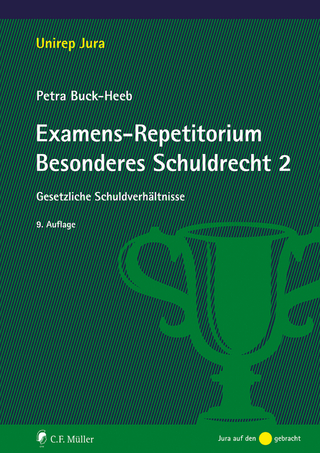
Making Tort Law
What Should be Done and Who Should Do it
Seiten
2005
AEI Press (Verlag)
978-0-8447-4177-2 (ISBN)
AEI Press (Verlag)
978-0-8447-4177-2 (ISBN)
- Titel ist leider vergriffen;
keine Neuauflage - Artikel merken
This text notes that while the system of tort liability in the US seeks to achieve a variety of aims, the system is almost certainly not the best possible way to achieve those goals. At best, it claims, tort compensation represents an uncertain, delayed and expensive form of insurance.
Charles Fried and David Rosenberg note that the system of tort liability in the United States seeks to achieve a variety of aims: to compensate individuals injured by the risky business activities of large entities; to create incentives for those entities to take into account the dangers of their activities in the design of their processes, products, and services; and to allow individuals who feel powerless to make their grievances felt against large, impersonal, and sometimes unresponsive organizations. The authors contend, however, that our current tort system is almost certainly not the best possible way to achieve those goals. At best, they claim, tort compensation represents an uncertain, delayed, and expensive form of insurance. In addition, the disciplining effect on business is haphazard. Fried and Rosenberg assess the comparative advantages of courts and legislatures in taking the initiative of changing tort law to further the social objective of optimally managing accident risk.
They conclude that the nature of the change involved-particularly the function that the change would serve and the means that would work best-strongly suggests that the legislature should play the major role in designing tort reform. And they contend that automobile and other nonbusiness-related accidents should be eliminated from the tort system.
Charles Fried and David Rosenberg note that the system of tort liability in the United States seeks to achieve a variety of aims: to compensate individuals injured by the risky business activities of large entities; to create incentives for those entities to take into account the dangers of their activities in the design of their processes, products, and services; and to allow individuals who feel powerless to make their grievances felt against large, impersonal, and sometimes unresponsive organizations. The authors contend, however, that our current tort system is almost certainly not the best possible way to achieve those goals. At best, they claim, tort compensation represents an uncertain, delayed, and expensive form of insurance. In addition, the disciplining effect on business is haphazard. Fried and Rosenberg assess the comparative advantages of courts and legislatures in taking the initiative of changing tort law to further the social objective of optimally managing accident risk.
They conclude that the nature of the change involved-particularly the function that the change would serve and the means that would work best-strongly suggests that the legislature should play the major role in designing tort reform. And they contend that automobile and other nonbusiness-related accidents should be eliminated from the tort system.
| Erscheint lt. Verlag | 1.8.2005 |
|---|---|
| Verlagsort | Washington DC |
| Sprache | englisch |
| Maße | 126 x 198 mm |
| Themenwelt | Recht / Steuern ► EU / Internationales Recht |
| Recht / Steuern ► Privatrecht / Bürgerliches Recht ► Besonderes Schuldrecht | |
| ISBN-10 | 0-8447-4177-9 / 0844741779 |
| ISBN-13 | 978-0-8447-4177-2 / 9780844741772 |
| Zustand | Neuware |
| Informationen gemäß Produktsicherheitsverordnung (GPSR) | |
| Haben Sie eine Frage zum Produkt? |
Mehr entdecken
aus dem Bereich
aus dem Bereich
steueroptimiert übertragen und den Schenker absichern
Buch | Softcover (2023)
C.H.Beck (Verlag)
14,90 €
Vertragliche Schuldverhältnisse
Buch | Softcover (2022)
C.F. Müller (Verlag)
26,00 €
Gesetzliche Schuldverhältnisse
Buch | Softcover (2024)
C.F. Müller (Verlag)
26,00 €


